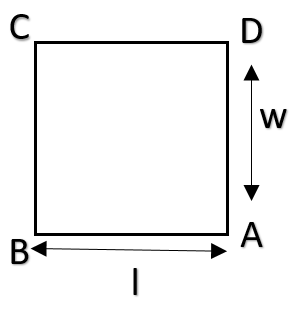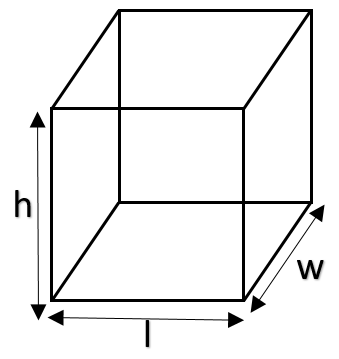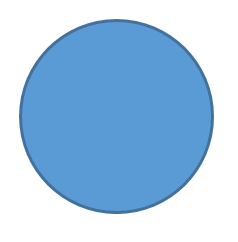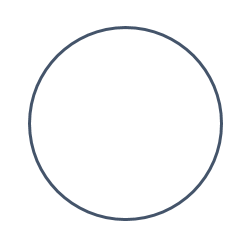
Boundaries of surfaces are
\[\begin{align}
& \text{a) }\text{Surface}\text{.} \\
& \text{b) Curves}\text{.} \\
& \text{c) Lines}\text{.} \\
& \text{d) Points}\text{.} \\
\end{align}\]
Answer
569.4k+ views
Hint: Now consider any random surface for simplicity we consider a circular disc. Let us just consider its boundary. Hence we get the answer to the following question.
Complete step by step answer:
Now to understand surfaces let us first understand dimensions.
Dimensions basically tell us the nature of an object.
Now a 1-D (one dimensional) object is an object which has just length.
Now an example of one dimensional object is a line segment.

A line segments has length but no height and width
Similarly a 2-D (2-dimensional) object is an object with length and width.
Now for example of a 2-D object consider a square.

A square has a length as well as width. Hence it is a 2 dimensional object.
And 3-D (3 dimensional object is an object with length, width and height)
Now for example of a 3 dimensional object consider a cube.

Now a cube has length, breadth and height hence it is a 3 dimensional object.
Now surfaces to measure a one dimensional we just need length.
But when it comes to two dimensional objects we cannot just rely on length as we need to consider its breadth too.
Now a two dimensional object is generally called a surface.
Measure of a surface is given by Area.
Now even 3 dimensional objects have a surface.
For example a cube has 6 surfaces.
So what happens when we take the boundary of a surface?
A boundary of a surface is always a curve.
For example, consider a circle.
A circular disc is a surface.

Now let us just consider its boundaries.

Hence, we get a curve.
Hence we have that the boundaries of surfaces are curves.
Note: Note that we can take boundaries only in 2-D and 3-D. since there is just length in 1 dimensional objects its boundary will be the length itself. Also there exists an object which is of 0 dimension, and that is called a point. A point has no length, no breadth and no height hence we say that a point is an object with 0 dimensions.
Complete step by step answer:
Now to understand surfaces let us first understand dimensions.
Dimensions basically tell us the nature of an object.
Now a 1-D (one dimensional) object is an object which has just length.
Now an example of one dimensional object is a line segment.

A line segments has length but no height and width
Similarly a 2-D (2-dimensional) object is an object with length and width.
Now for example of a 2-D object consider a square.

A square has a length as well as width. Hence it is a 2 dimensional object.
And 3-D (3 dimensional object is an object with length, width and height)
Now for example of a 3 dimensional object consider a cube.

Now a cube has length, breadth and height hence it is a 3 dimensional object.
Now surfaces to measure a one dimensional we just need length.
But when it comes to two dimensional objects we cannot just rely on length as we need to consider its breadth too.
Now a two dimensional object is generally called a surface.
Measure of a surface is given by Area.
Now even 3 dimensional objects have a surface.
For example a cube has 6 surfaces.
So what happens when we take the boundary of a surface?
A boundary of a surface is always a curve.
For example, consider a circle.
A circular disc is a surface.

Now let us just consider its boundaries.

Hence, we get a curve.
Hence we have that the boundaries of surfaces are curves.
Note: Note that we can take boundaries only in 2-D and 3-D. since there is just length in 1 dimensional objects its boundary will be the length itself. Also there exists an object which is of 0 dimension, and that is called a point. A point has no length, no breadth and no height hence we say that a point is an object with 0 dimensions.
Recently Updated Pages
Master Class 8 Social Science: Engaging Questions & Answers for Success

Master Class 8 Maths: Engaging Questions & Answers for Success

Master Class 8 Science: Engaging Questions & Answers for Success

Class 8 Question and Answer - Your Ultimate Solutions Guide

Master Class 8 English: Engaging Questions & Answers for Success

Master Class 11 Economics: Engaging Questions & Answers for Success

Trending doubts
What is BLO What is the full form of BLO class 8 social science CBSE

Citizens of India can vote at the age of A 18 years class 8 social science CBSE

Full form of STD, ISD and PCO

Right to vote is a AFundamental Right BFundamental class 8 social science CBSE

Summary of the poem Where the Mind is Without Fear class 8 english CBSE

What are gulf countries and why they are called Gulf class 8 social science CBSE





